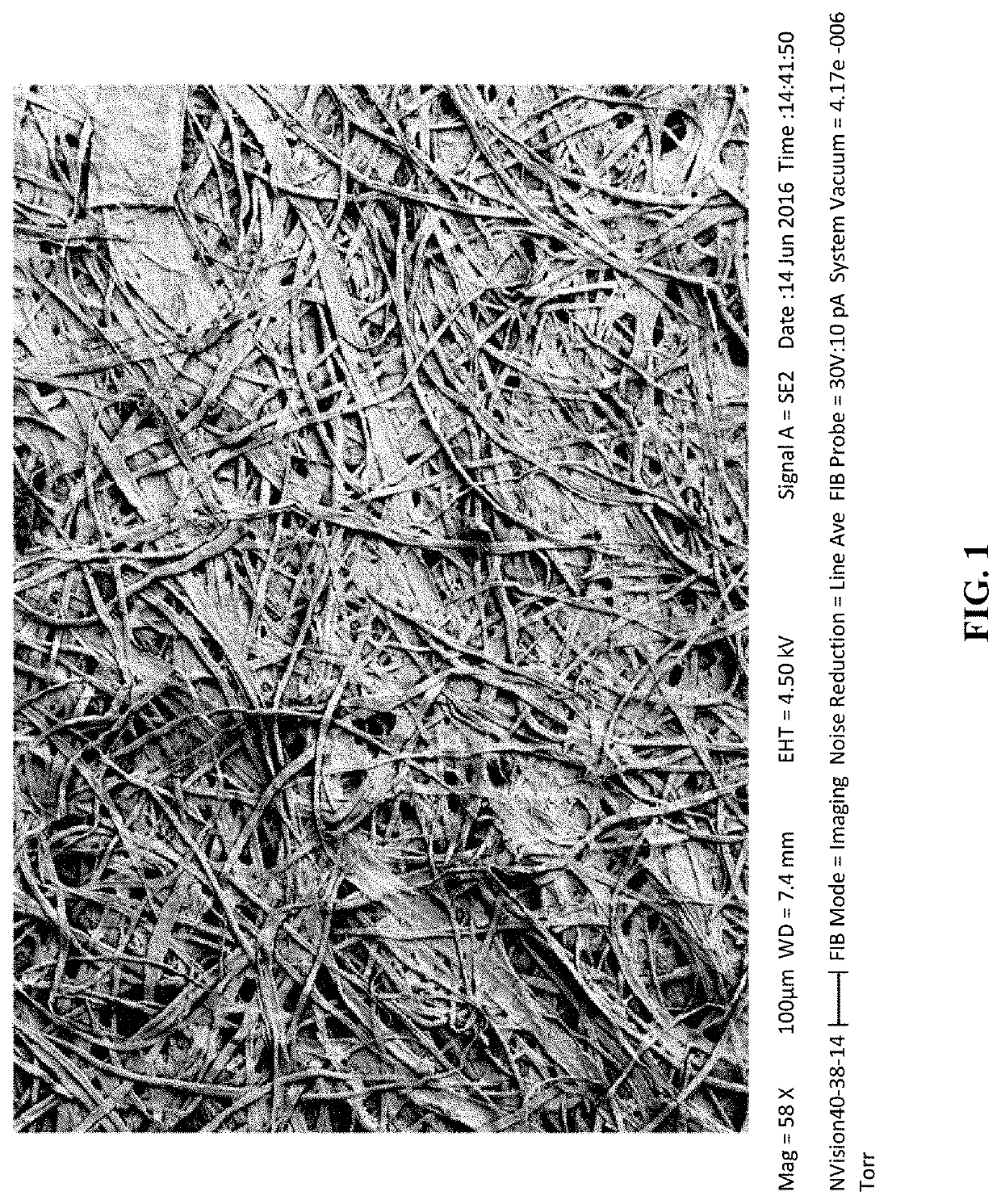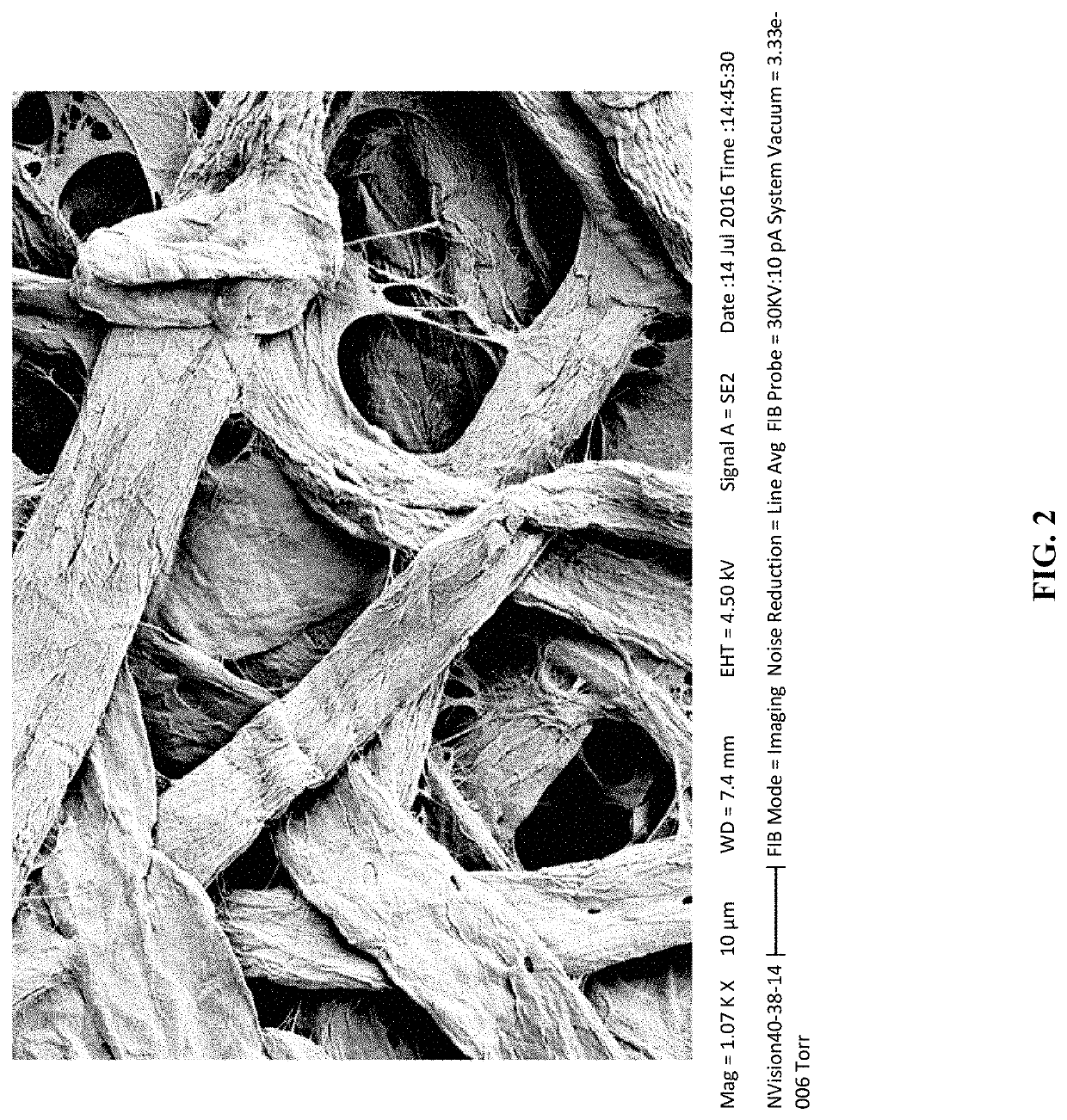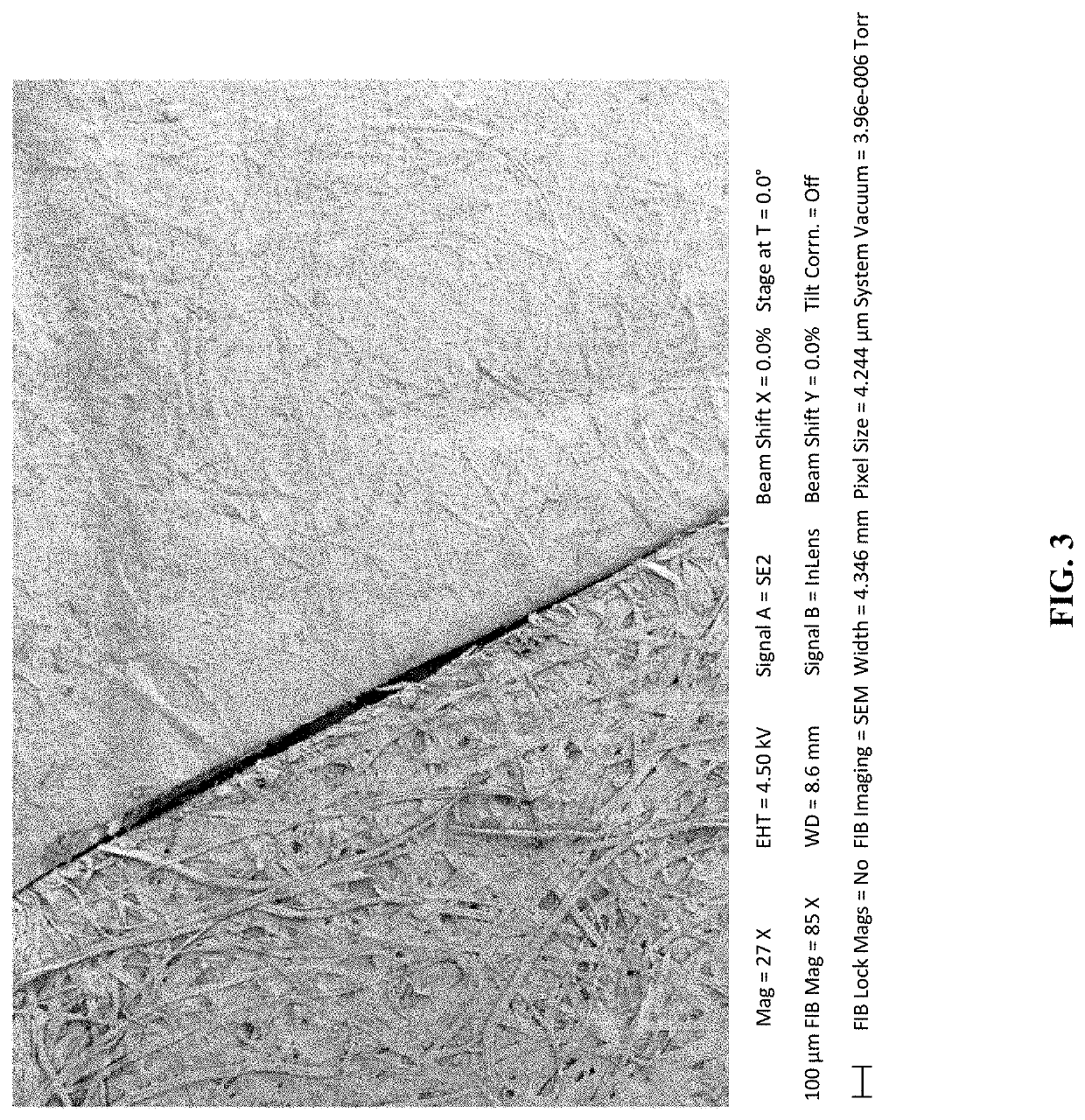Biobased carrier coatings
a carrier coating and biobased technology, applied in bio-packaging, sustainable manufacturing/processing, sustainable packaging industry, etc., can solve the problems of reducing the receptivity of ink or adhesives, soiled fabrics with reduced useful life, and perfluorinated hydrocarbon persistence in the environment, so as to improve strength and resistance, high surface energy and resistance to oil and/or grease penetration
- Summary
- Abstract
- Description
- Claims
- Application Information
AI Technical Summary
Benefits of technology
Problems solved by technology
Method used
Image
Examples
example 1
e Fatty Acid Ester Formulations
[0168]SEFOSE® is a liquid at room temperature and all coatings / emulsions containing that material were applied at room temperature using a bench top drawdown device. Rod type and size were varied to create a range of coat weights.
Formulation 1
[0169]Fifty ml of SEFOSE® were added to a solution containing 195 ml of water and 5 grams of carboxymethylcellulose (FINNFIX® 10; CP Kelco, Atlanta, Ga.). The formulation was mixed using a Silverson Homogenizer set to 5000 rpm for 1 minute. The emulsion was coated on a 50 gram base sheet made of bleached hardwood pulp and on an 80 gram sheet composed of unbleached softwood. Both papers were placed into an oven (105° C.) for 15 minutes to dry. On removal from the oven, sheets were placed on the lab bench and 10 drops of water (room temperature) were applied via pipette to each sheet. Untreated base sheets absorb a droplet of water immediately, whereas sheets coated with varying amounts of SEFOSE® showed increasing ...
example 2
f Saccharide Ester to Cellulosic Substrate
[0174]In an effort to determine whether SEFOSE® was reversibly bound to a cellulosic material, pure SEFOSE® was mixed with pure cellulose at ratio of 50:50. The SEFOSE® was allowed to react for 15 min at 300° F. and the mixture was extracted with methylene chloride (non-polar solvent) or distilled water. The samples were refluxed for 6 hours and gravimetric analysis of the samples was conducted.
TABLE 4Extraction of SEFOSE ® from Cellulosic MaterialTotalSEFOSE ®SEFOSE ®% SEFOSE ®SampleMassMassExtractedRetainedCH2Cl22.851.420.2583%H2O2.281.140.0893%
example 3
on of Cellulosic Surfaces
[0175]Scanning electron microscope images of base papers with and without MFC illustrate how a less porous base has potential to require far less waterproofing agents reacted to the surface. FIGS. 1-2 show untreated, medium porosity Whatman filter paper. FIGS. 1 and 2 show the relative high surface area exposed with which a derivatizing agent can react. However, a highly porous sheet with plenty of room for water to escape is revealed. FIGS. 3 and 4 show a side by side comparison of paper made with recycled pulp before and after coating with MFC. (There are two magnifications of the same samples, no MCF on the left side of image). The testing shows that derivatization of a much less porous sheet shows more promise for long term water / vapor barrier performance. The last two images are close ups taken of an average, “pore,” in a sheet of filter paper as well as a similar magnification of CNF-coated paper for contrast and comparison.
[0176]The data above demonst...
PUM
| Property | Measurement | Unit |
|---|---|---|
| contact angles | aaaaa | aaaaa |
| surface energy | aaaaa | aaaaa |
| surface energy | aaaaa | aaaaa |
Abstract
Description
Claims
Application Information
 Login to View More
Login to View More - R&D
- Intellectual Property
- Life Sciences
- Materials
- Tech Scout
- Unparalleled Data Quality
- Higher Quality Content
- 60% Fewer Hallucinations
Browse by: Latest US Patents, China's latest patents, Technical Efficacy Thesaurus, Application Domain, Technology Topic, Popular Technical Reports.
© 2025 PatSnap. All rights reserved.Legal|Privacy policy|Modern Slavery Act Transparency Statement|Sitemap|About US| Contact US: help@patsnap.com



